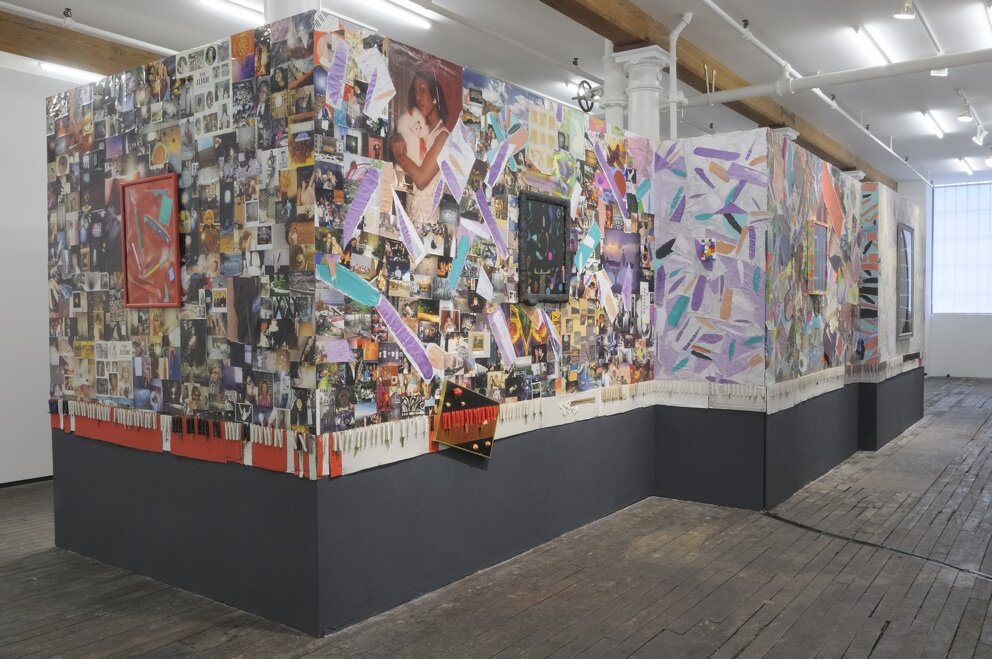
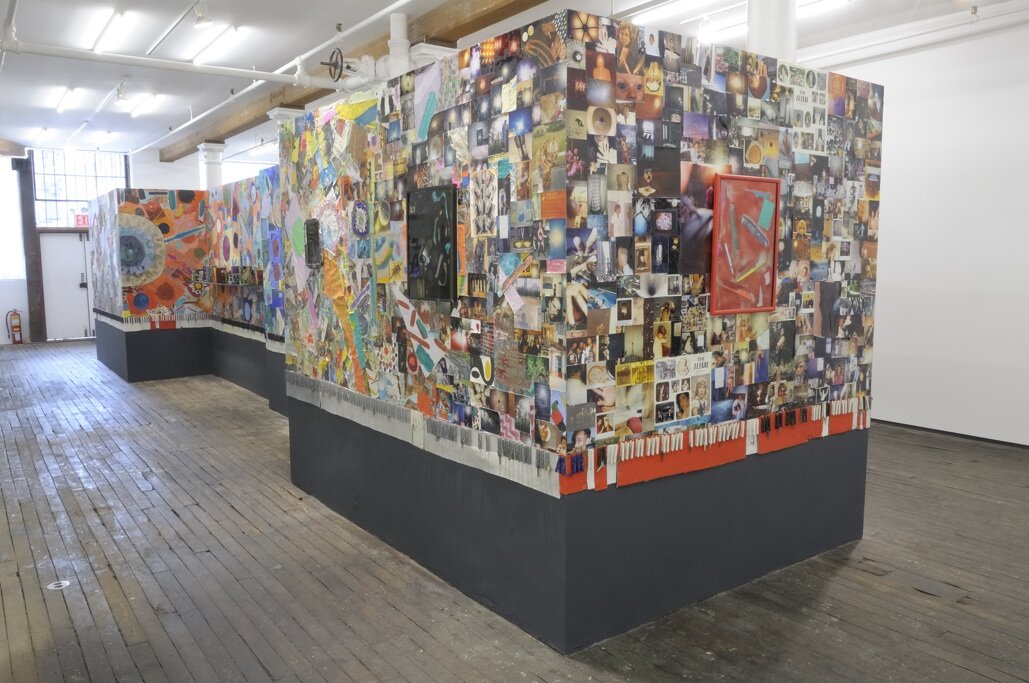
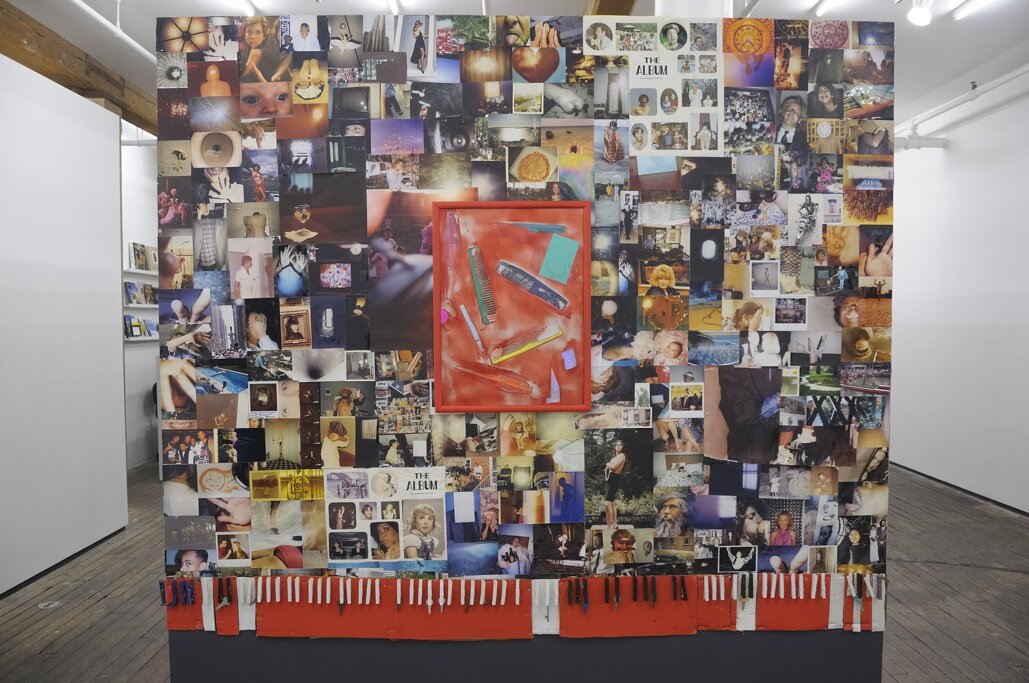
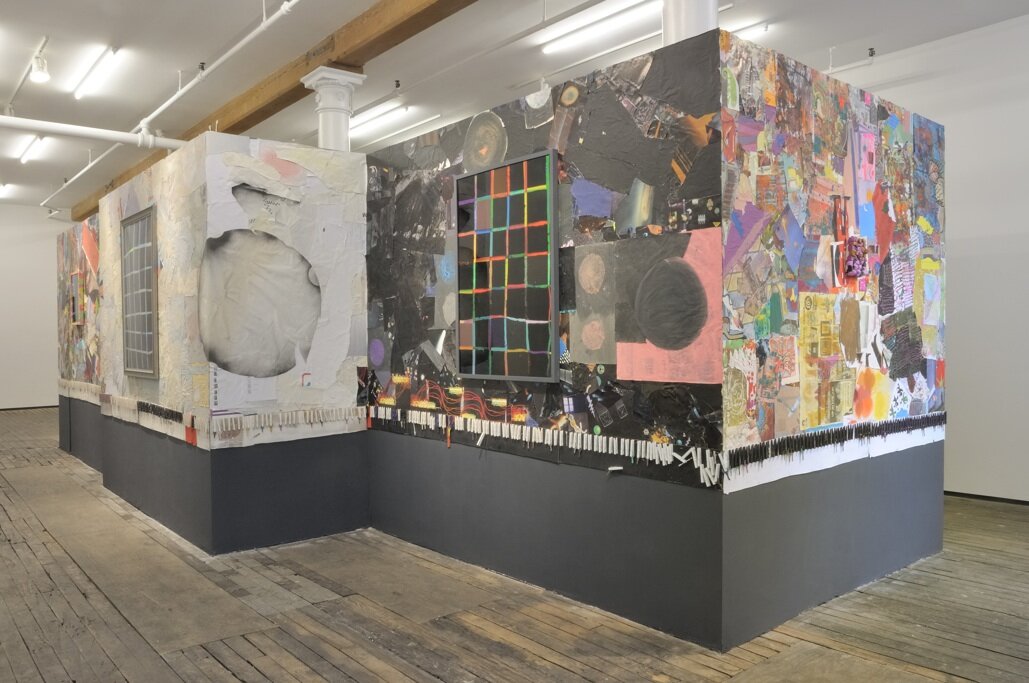
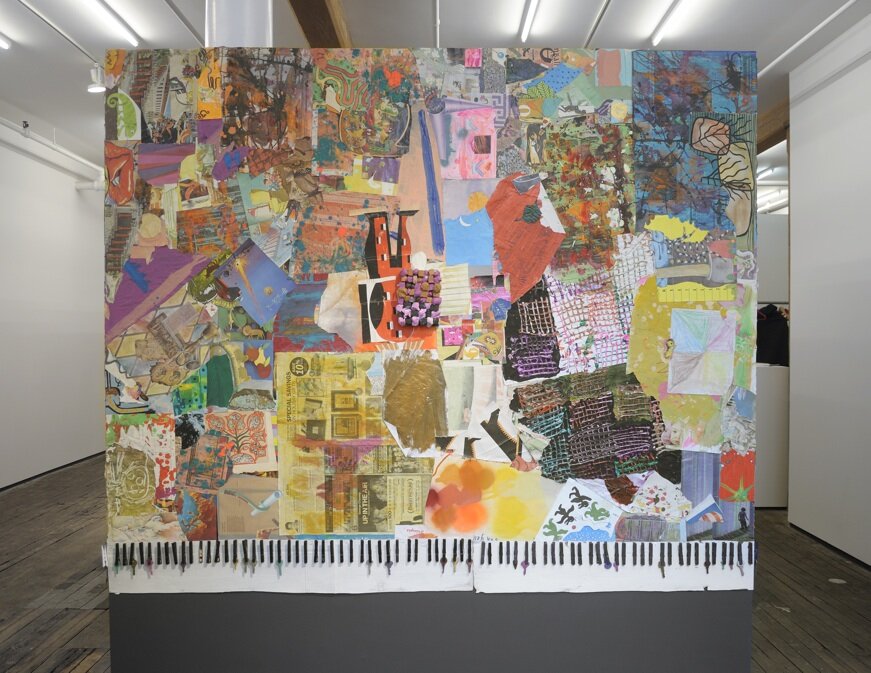
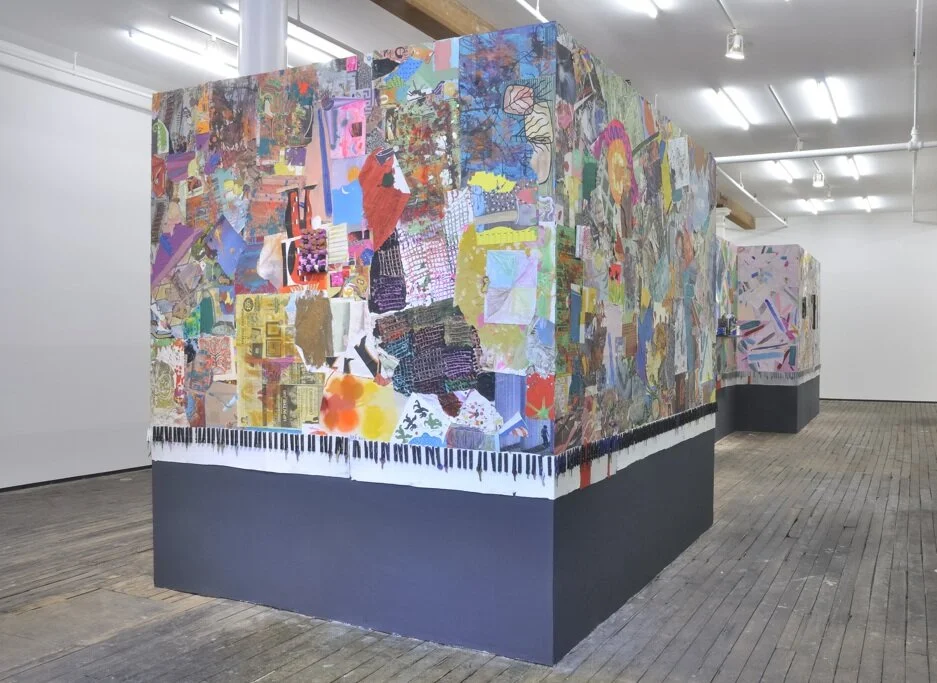
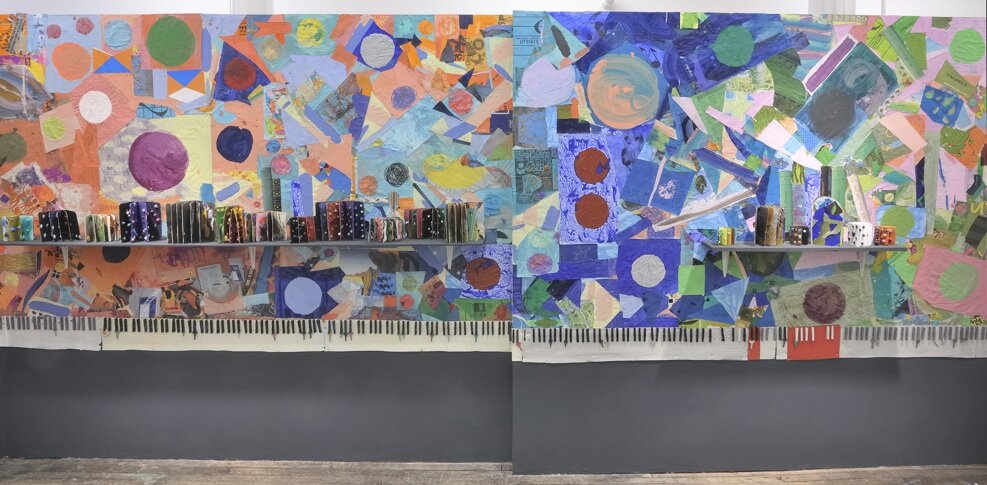
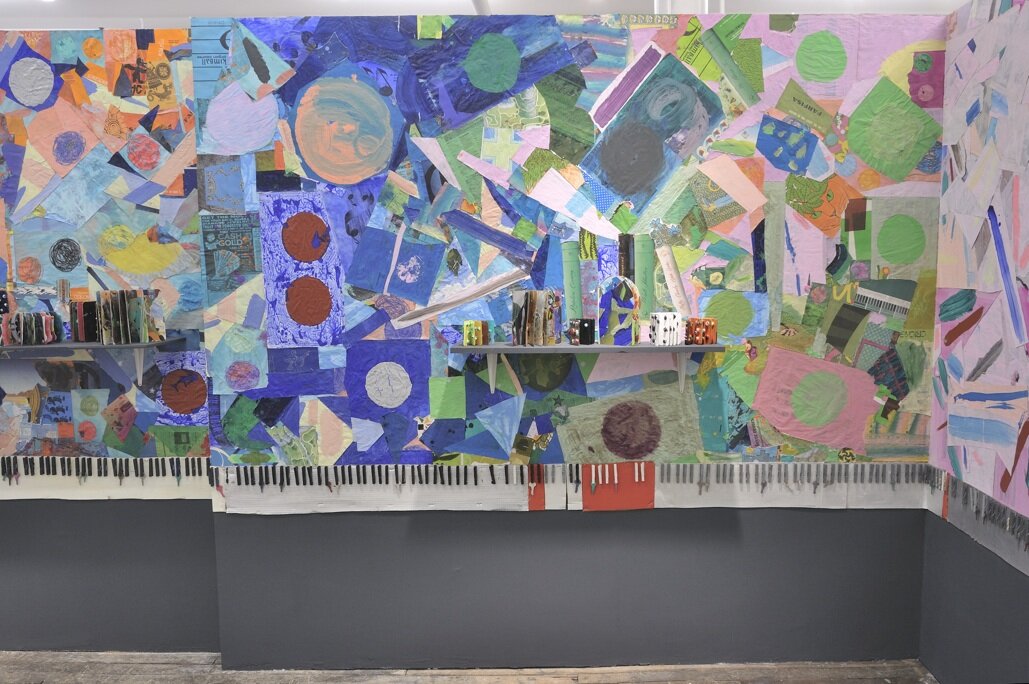
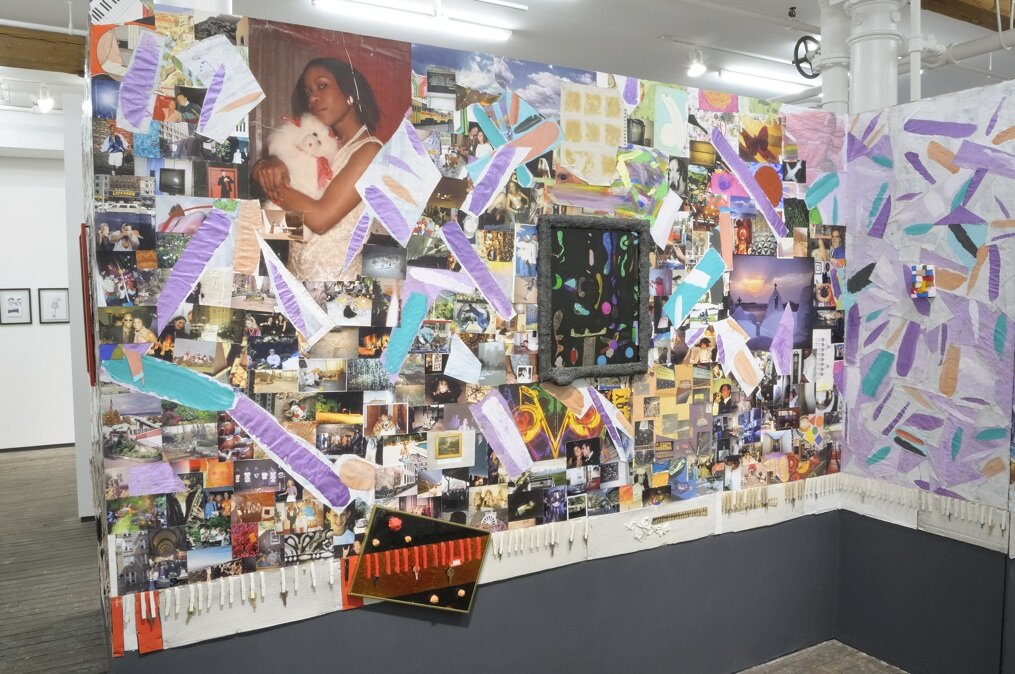
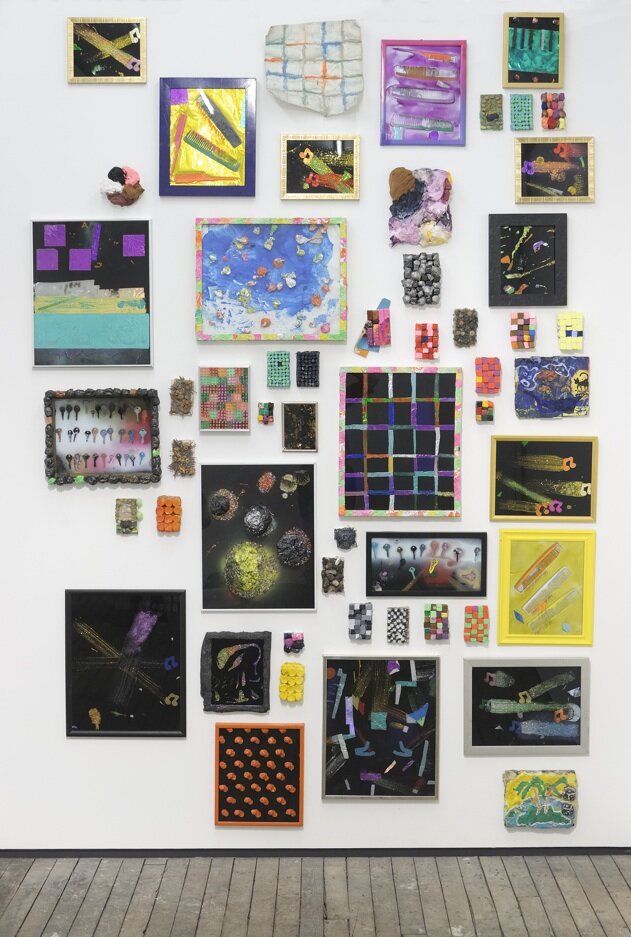
NEW YORK
Brian Belott
The Joy of File
April 7 - May 16, 2010
Zürcher Studio is proud to present a solo exhibition in which Brian Belott will take an enormous risk and look truth in the eye like never before. Confronted with a world of unfathomable absurdity, Belott the performer adopts the only defense available, namely that of art as the ultimate rampart. In highly rigorous fashion, Belott will construct his largest “Wild Time Machine” to date. Elusive in its form, unexpected in its limits, and incomprehensible at first sight, it will be a wall of incredible density, incorporating a life-long collection of dazzling detritus. The resulting work is seemingly insurmountable, with meanders as complex as those of a labyrinth. It contains images of all sorts: pictures cut out of children’s books and old science textbooks, found photos and paper painted by the artist himself. In various places sound has been added—talking, music and ambient noises collected from found cassette tapes and recordios and some sampled off of YouTube. These sound samples become clear at close range, and one’s movement through the space is like a collage to the ears in itself. The paradox is that although the overall effect is unquestionably monumental (if only in terms of its dimensions), it follows a principle of discretion that denotes privacy, like a Renaissance “cabinet of curiosities,” and an affirmation that this enormous collage is above all else, autobiographical in nature.
And there is a crucial element that emphasizes this point: here and there are glass paintings as well as mixed medium books displayed on top of shelves that project out from the wall. These are not books to be read, but fetishistic objects to be compulsively grasped for the esthetic pleasure they procure, which is actually less innocent than it looks. The wall itself employs various illustrators and artists and the accidental and intended snapshots from amateur photographers to catalog elements—arrows, clouds, planes, planets—exemplifying the infinite perspectives that shade our seen world. Like in some “cult” work he admires such as the unfinished Charles Ives’ Universe Symphony, the past is represented by the genesis of oceans and mountains, the present is represented by the earth, the evolution of nature, and humanity, and the future is represented by the sky as a symbol of the spiritual. Through collaged views of these symbolic elements, the piece represents questions of “What” and “How” that people ask about life, and to which Belott provides his own echo.
There is no mistake why Belott cites Ives as a major influence, as the composer was intensely involved with collage himself, sampling music as diverse as Beethoven, religious hymns and popular song in the same composition. In the second movement of the Ives’ Concord Sonata(1) the pianist uses a piece of wood that is 14 inches long to play a “cluster chord” comprised of a sequence of black and white keys sustained throughout the movement. In the mid to late ‘90s, Belott and frequent collaborator Larissa Velez choreographed three dance pieces to Ives’ music, and more recently, at the Swiss Institute’s Dark Fair in 2008, Brian and Larissa composed a vocal piece by collaging jingles, melodies, sound bytes, hums, and murmurs for a “Wordless Chorus” of about 30 people. Like Ives, Belott’s work feels so uninhibited that it could veer on rebellious, but his predilection for formalism and the sensual and painterly handling of materials, counterbalances an obsession with the new and the unknown.
Another artist with similarities as striking as they are inexplicable, and with multiple resonances that extend beyond the limits of time, is Man Ray. Belott’s collage In the Eye (2008), in which the creation of “reserves” is essential, could be likened to Man Ray’s photograph Lee Miller’s Eye (1932, Penrose Collection), on the back of which he wrote, “I am always in reserve” (October 11, 1932). Both artists use unconventional materials that leave audiences guessing where the artwork stops. In his photograph Man (1920) (2), Man Ray has an ephemeral assemblage in the form of a skeleton whose vertebrae are represented by a line of wooden clothes pegs –an accessory Belott has used a number of times. The Dadaist Man Ray, the pioneer of the “rayogram”(3) was also one of the first American artists who ever took radical positions within the art world. The same spirit can be found in Belott’s performance Head on Fire, Ring the Alarm, in which he set fire to his hair in front of a camera. This was not just play-acting, like a sketch by the Marx Brothers(4), but was intended to depict, as Man Ray had done, art as an act of pure freedom that would neither comply with conventions nor accept any suggestion of a need to be socially useful. – Bernard Zürcher
Notes
1- The music of Charles Ives (1874-1954), which had links with the Transcendentalists, was largely ignored during his lifetime, except by the avant-gardists of the 1920s. Based on complex rhythms and dissonances, it inspired musicians as different as John Cage and Frank Zappa.
2- Exhibited at the Jewish Museum in the Alias Man Ray exhibition, November 15, 2009-March 14, 2010. Such links appear less random when one recalls that it was Man Ray and Marcel Duchamp who in 1917, in New York, launched the Dadaist movement, and that Man Ray produced collages.
3- The procedure, invented by Alfred Stieglitz, consists of placing an object on photosensitive paper.
4- Another inexhaustible source of inspiration for Belott.
SELECTED BIOGRAPHY
Solo shows since 2004
2009
“Jelly Harp”, Galerie Zürcher, Paris
2008
Show #16 : Ed Blackburn + Brian Belott, and/or gallery, Dallas, TX
Leyendecker Gallery, Tenerife, Canary Islands
2007
Swirly Music, CANADA, New York, NY
Brian Belott Lost and Found Slide Show, Community Outreach Gallery, Ontario, Canada
2006
Deep Data, Freight and Volume, New York, NY
With Michael Mahalchick, Atelier Cardenas Bellanger, Paris, France
2005
Books, books, books, books, books, books and books, CANADA, New York, NY
Adult Soda, Stefan Stux, New York, NY
2004
What’s Going On, Kenny Schacter, New York, NY
Group exhibition since 2008
2010
Out of Order, curated by Scott Hug, Andrew Edlin Gallery, New York, NY
2009
“Wild Feature 2” curated by Brian Belott, Galerie Zürcher, Paris, France
“Relics From the Other Realms” curated by Athena Llewellyn Barat for the Barat Foundation, Newark, NJ
“What’s Bin Did and What’s Bin Hid” curated by Ryan Steadman, 106 Green Gallery, Brooklyn, NY
“Cutters” curated by James Gallagher, Cinders Gallery, Brooklyn, NY
“The Soho Art + Fashion Event at 7 For All Mankind” curated by John Connelly, New York, NY
“New York Minute” curated by Kathy Grayson, Macro Future, Rome, Italy
“Apartment Show” curated by Denise Kupferschmidt and Joshua Smith, Envoy Gallery, New York, NY
“The Living and the Dead,” Gavin Brown, New York, NY
“Wild Feature” curated by Brian Belott, Zürcher Studio, New York, NY
“Loving Overkill Via Satellite” directed and choreographed by Larissa Velez, Dance Theater Workshop, New York, NY
“No Sockpuppet” curated by Michael J. G. Olsen, The Switch Building, New York, NY
“Rare Editions : The Book As Art” curated by Susan Fleminger, Lehman College Art Gallery, Bronx, NY
“Peanut Gallery” curated by Joe Bradley, The Journal Gallery, New York, NY
2008
“Book / Shelf” Museum of Modern Art, New York, NY
“I Won’t Grow Up”, Cheim & Read, New York, NY
Show #16 : Ed Blackburn + Brian Belott, and/or gallery, Dallas, TX
“Sunshine” Ritter/Zamet at Rental Gallery, New York, NY
“The Ice Cream Show”, LOYAL, Stockholm, Sweden
